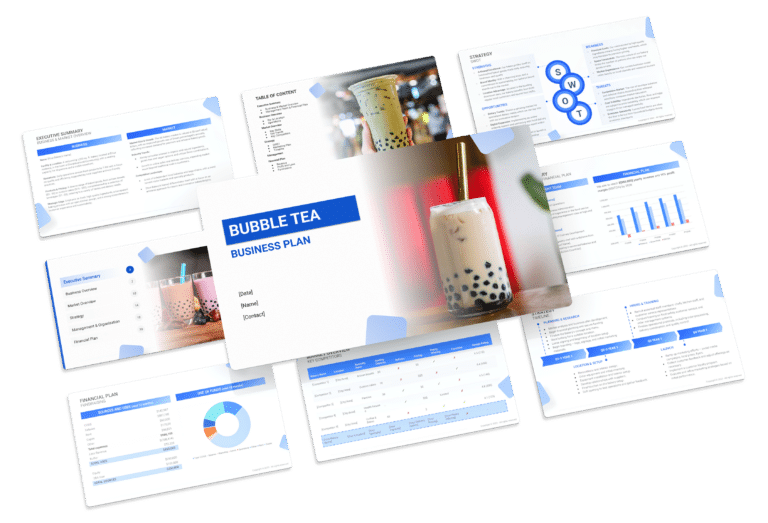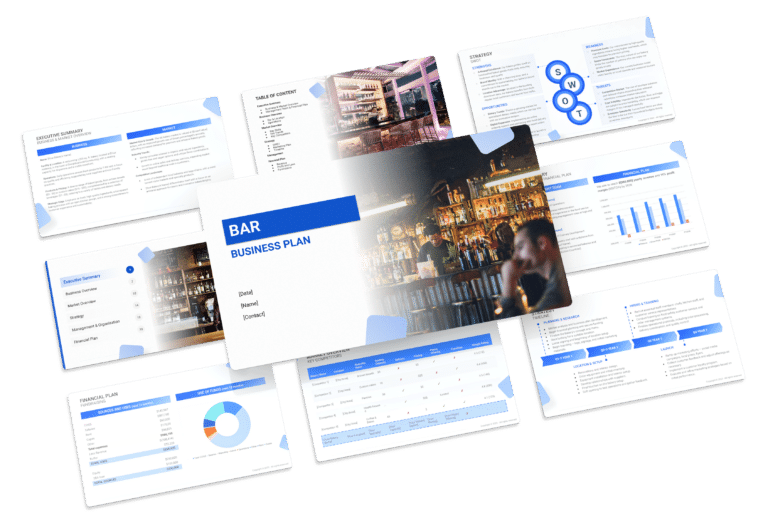SWOT Analysis Example for a Restaurant (Example)

Crucial for a restaurant business plan, a SWOT analysis assesses internal strengths and weaknesses, along with external opportunities and threats. Strengths, like exceptional cuisine and a prime location, contrast with weaknesses such as high staff turnover or limited marketing resources.
This strategic analysis unveils the restaurant’s market position, spotlighting potential growth areas. For instance, opportunities may arise from a growing interest in niche cuisines, while threats could originate from increased competition or economic downturns.
This article will explore diverse examples of strengths and weaknesses, providing restaurant owners valuable insights for strategic business planning and examples for a SWOT analysis.

Strengths
Before diving into the SWOT analysis, let’s explore the concept of strengths. Strengths are the internal attributes and resources that give your restaurant a competitive advantage in the market. Identifying and leveraging these strengths is essential for achieving sustainable growth and success.
- Exceptional Culinary Team: Your restaurant may have a highly skilled and experienced culinary team, capable of creating innovative and delicious dishes that set you apart from competitors.
- Example: Your head chef has won prestigious culinary awards and brings a unique fusion of international flavors to the menu, attracting food enthusiasts seeking a memorable dining experience.
- Prime Location: A strategic and high-traffic location can be a significant strength for your restaurant, as it increases visibility and accessibility to potential customers.
- Example: Your restaurant is situated in the heart of a bustling downtown area, surrounded by offices, theaters, and tourist attractions, ensuring a steady stream of diners throughout the day.
- Strong Brand and Reputation: A positive brand image and reputation for quality food and service can be a powerful strength, leading to customer loyalty and word-of-mouth recommendations.
- Example: Your restaurant has consistently received rave reviews from food critics and has a dedicated following on social media, enhancing your credibility and attracting discerning diners.
- Effective Marketing Strategies: If you have a well-executed marketing plan, it can be a significant strength, helping you attract new customers and retain existing ones.
- Example: Your restaurant runs successful digital marketing campaigns, offering exclusive promotions and engaging content on social media platforms, driving customer engagement and loyalty.
Weaknesses
Now, let’s turn our attention to weaknesses. Weaknesses are internal factors that hinder your restaurant’s performance and competitiveness. Identifying and addressing these weaknesses is essential for sustainable growth and improvement.
- Inconsistent Service Quality: If your restaurant struggles with maintaining consistent service quality, it can lead to customer dissatisfaction and negative reviews.
- Example: Occasionally, your waitstaff fails to provide prompt and attentive service, resulting in complaints and a potential loss of repeat customers.
- Limited Parking Space: Insufficient parking can deter potential diners, especially in areas with high traffic and limited parking options.
- Example: Your restaurant has limited on-site parking, causing frustration among customers who struggle to find parking nearby, which can negatively impact their dining experience.
- High Employee Turnover: A high turnover rate among staff members can disrupt operations, affect service quality, and increase training costs.
- Example: Your restaurant experiences frequent staff turnover due to inadequate employee benefits and limited growth opportunities, leading to inconsistent service.
- Limited Menu Diversity: A limited menu may deter customers looking for a wide variety of options or those with specific dietary restrictions.
- Example: Your restaurant’s menu primarily focuses on a specific cuisine, which may alienate potential customers seeking diverse dining experiences.
Opportunities
Now, let’s explore opportunities. Opportunities are external factors and trends that your restaurant can capitalize on to achieve growth and success. Identifying and seizing these opportunities can help your restaurant thrive in a competitive market.
- Growing Demand for Healthy Dining: An increasing trend toward healthier eating habits presents an opportunity for your restaurant to introduce nutritious and appealing menu options.
- Example: You can add a dedicated section to your menu featuring low-calorie, gluten-free, and plant-based dishes to cater to health-conscious customers.
- Delivery and Takeout Services: The rising popularity of food delivery and takeout services provides an opportunity to expand your customer reach and revenue streams.
- Example: Partnering with popular food delivery platforms can help your restaurant tap into a broader customer base and boost sales.
- Local Sourcing and Sustainability: Embracing locally sourced ingredients and sustainable practices can align with the growing consumer preference for eco-friendly dining.
- Example: You can collaborate with local farmers and suppliers to source fresh, seasonal ingredients, and promote your commitment to sustainability in your marketing campaigns.
- Online Reservation Systems: Implementing an efficient online reservation system can enhance customer convenience and streamline your restaurant’s operations.
- Example: By offering online reservations, you can reduce wait times and provide customers with a hassle-free booking process, improving overall customer satisfaction.
Threats
Finally, let’s address threats. Threats are external factors and challenges that pose risks to your restaurant’s performance and profitability. Identifying and mitigating these threats is crucial for long-term sustainability.
- Economic Downturns: Economic recessions or downturns can lead to decreased consumer spending on dining out, impacting your restaurant’s revenue.
- Example: During economic downturns, consumers may prioritize home-cooked meals over dining out, resulting in lower foot traffic and sales.
- Intense Competition: A highly competitive restaurant market can make it challenging to stand out and attract customers.
- Example: Your restaurant faces stiff competition from numerous nearby eateries offering similar cuisine, making it vital to differentiate your offerings and marketing strategies.
- Food Safety and Health Regulations: Stringent food safety and health regulations can pose compliance challenges and incur additional costs.
- Example: Frequent inspections and stricter food safety requirements may necessitate investments in staff training and infrastructure improvements.
- Changing Consumer Preferences: Rapid shifts in consumer preferences and food trends can lead to declining customer interest in your restaurant’s offerings.
- Example: A sudden shift away from a particular type of cuisine featured on your menu can result in decreased demand and the need for menu adjustments.





